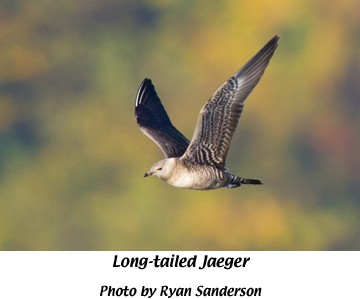Yellow-headed Blackbird (Xanthocephalus xanthocephalus) By Matt Beatty
Hoosier birders are fortunate to live in an ecological crossroads, where species from the north, south, east and west converge to create a rich diversity of breeding bird species. Many of these species reach the edge of their range in our state. A perfect example of this is the Yellow-headed Blackbird, a western species that is the rarest of all regularly occurring blackbirds in Indiana.
A male Yellow-headed Blackbird is a striking bird, not to be confused with any other species. Most of the body is black above and below. The head is covered in brilliant yellow feathers, which also reach down the breast. Set against this yellow is a small amount of black connecting the dark eye and bill. In flight, the males show a dramatic white wing patch, which is often one of the first things to give the bird away if it is hiding in a larger flock of other blackbird species. The females are a more subdued brown color overall, but still show a fair amount of yellow on the head and chest. Beyond the obvious visual field marks, the Yellow-headed Blackbird also has a distinctively harsh song, which David Sibley describes as “like the raucous wail of a chainsaw”.
In most of the state, the best way to see a Yellow-headed Blackbird is to scan the large blackbird flocks that roam the countryside in Fall, Winter and early Spring. These flocks are predominantly made up of Red-winged Blackbirds, Rusty Blackbirds, and Common Grackles, but they can occasionally harbor a stray Yellow-headed Blackbird.
The best place to look for breeding birds, however, is in the marshes of the Calumet region in the extreme northwest corner of the state. Historically, the Yellow-headed Blackbird was quite common in this area. In 1898, ornithologist Amos Butler described them as a “locally abundant summer resident in northwest Indiana” (Brock 2006). Most of the original marshes in the Calumet region were destroyed by industry and residential growth, and by the last decades of the 20th century breeding activity had been reduced to sporadic and temporary colonies of small numbers of birds.
Although the Yellow-headed Blackbird has been nearly extirpated as a breeding species in the state, there is still hope for the Species in the Calumet Region. Many organizations and agencies are working to protect and restore wetlands in the region and throughout the state. Indiana Audubon Society has recently partnered with DNR and the National Audubon Society to implement a statewide marsh bird survey program. The goal of this program is to better understand what marsh birds need to successfully breed in a wetland, so that land managers can provide better habitat for Yellow-headed Blackbirds and other declining marsh birds like rails and bitterns.
While it may be hard to imagine the Calumet marshes filled with Yellow-headed Blackbirds that Amos Butler described, there is still hope that the continued study and restoration of wetland habitats may allow their distinctive song to be a familiar sound in the Calumet Region once again.











